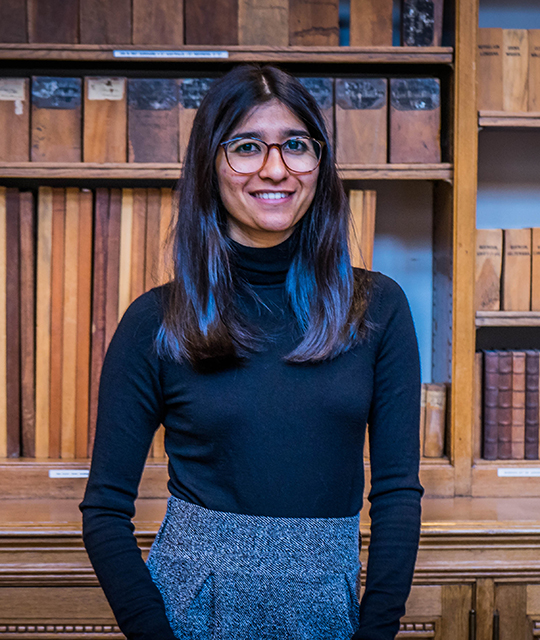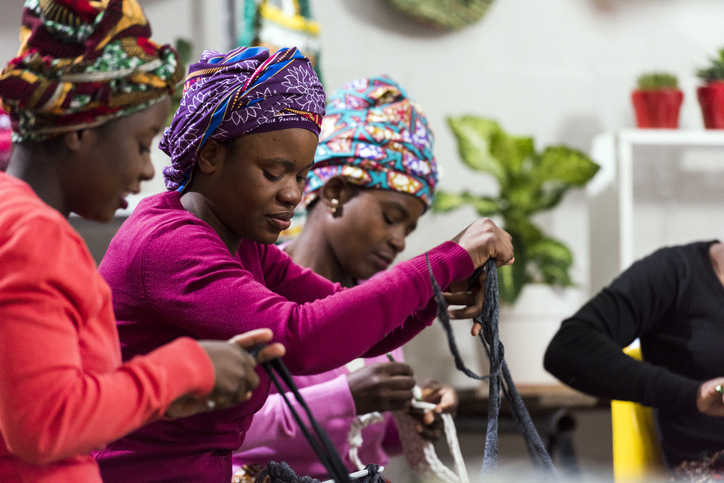What are the negative consequences of child marriage – and what is the potential for changing attitudes and social norms about this practice? This column reports evidence from development programs in Pakistan’s Punjab and Sindh provinces, where nearly two in every five young women are married before the age of 18.
In 2017, the demographic and health survey (DHS) of women in Pakistan in their early twenties showed that 39.5% had been married before the age of 18. In Punjab province, the share was 29.9%, while in Sindh province, it was 43.1%. Evidence from three recent development programs in those two provinces – Her Choice, More than Brides Alliance, and Yes I Do – sheds light on why child marriage is so prevalent in Punjab and Sindh, and how to tackle it.
Addressing child marriage in Pakistan
Addressing child marriage in Pakistan is challenging primarily because of its links to tradition and religion. Social norms are strongly institutionalized in communities, affecting the decision-making of parents and girls.
One problem is that many parents do not register births – especially of daughters – so it is difficult to prove that a bride is under the legal age. Another challenge is that those who conduct marriages – the Qazi or Nikah Khwan, village-level government officials – may not seek to verify the couple’s ages or inform the relevant authorities if they suspect that a bride is under the legal age.
Although fines and punishments exist, laws on child marriage have little impact as they are not well enforced. In Sindh, it is illegal for those under 18 to marry, whereas according to national law, the legal minimum age is 16.
Who decides when and whom the girls marry?
In both Punjab and Sindh, fathers and grandfathers commonly arrange marriages: the decision is considered crucial for the family, and difficult for a girl to make. In a few cases, the decision is taken when the daughter is born.
Mothers can influence the decision and propose suitable husbands. But the girls themselves rarely have the right to decide: in Punjab, only 4.8% say that they have control over if, when, and whom to marry. It is considered shameful for girls to talk about getting married – ‘good’ girls leave marriage decisions to their elders.
In both provinces, education seems to give girls more influence. For example, in Punjab there is a high rate of marriage before girls make the transition from middle school to secondary school aged 15 to 17, and after this, it drops.
‘My grandmother had fixed my marriage with my cousin when I was born. We live in a joint family, so we grew up in the same house […] he is nine years older than me. When he completed his school, my father-in-law opened a small grocery shop for him. He was 23 years old and I was 14 when we got married because I failed my school examination… my husband tells me that it was him who had insisted the elders to fix the marriage soon because I looked very pretty to him’ (19-year-old woman, Punjab).
What are the negative effects of child marriage?
Child marriage causes mental and physical harm. Girls are more likely to become pregnant early. As they often have little knowledge about sexual and reproductive health and rights (SRHR) and limited access to SRHR services, they and their infants are more likely to experience adverse health effects.
Pregnancy often leads to school dropout. Research in Punjab identifies that girls drop out of school after marriage. At times, they are not allowed out of the house by their in-laws, they are expected to stay at home to do chores or care work, or they are bullied by peers or teachers because of their pregnancy.
For married girls who do not become pregnant early, there can be other problems. In Sindh, women who have not conceived after a few years of marriage – or who have not produced a son – may be treated harshly by their in-laws, to the extent of not being allowed to speak in extreme cases.
Early marriage could also negatively affect boys. One reason is the poor job market: young men – who are seen as responsible for supporting their wives financially – often struggle to secure a stable income, leading to household poverty and stress. This in turn can increase the chances of domestic violence.
Our research finds that despite the negative effects of child marriage, young people in both Sindh and Punjab speak positively about some aspects of early marriage. Young married people are viewed positively by their communities. Moreover, marriage makes their families proud, and a young bride can share the burden of responsibilities with her in-laws.

Negative effects of child marriage according to household head in Punjab and Sindh
Source: Marriage: No Child’s Play, More Than Brides Alliance. Midline study.
Marriage: when is the right time?
‘When you have an adolescent unmarried daughter sitting at home, it is like a burden. Not because you don’t want to give her food, but because you have to take care of your honor. It is a big thing if someone talks about your daughter outside’ (64-year-old man, Punjab).
Marriage is highly affected by social norms in Pakistan. Young women are often symbolic of their families’ honor. If a young woman is not married, the community begins to gossip – which may affect the father and the broader family more than the girl herself.
In the areas studied by the three programs, girls are married when they are considered ‘mature’, rather than when they reach a certain age. In Sindh, in particular, child marriage is used as a strategy to protect young women from sexual assault, premarital sex, and out-of-wedlock pregnancies.
‘Here, a boy’s parents take a girl who can do work and cook food. If a girl is not educated and cannot do work, then what will be her benefit?’ (21-year-old man, Sindh).
Commonly, after marriage, daughters live with the groom’s family. In both Sindh and Punjab, our findings show that maturity is defined by a girl’s ability to cook, do chores, and ultimately run her future husband’s household in a practical, intellectual, and moral way. The start of menstruation is also considered to be an indication of maturity.
In the Pakistani context, marriage in Islam is regarded as Sunnah – an obligation – and religious scripture discusses what is the right moment for marriage, though in ways that are open to interpretation. Punjab is predominantly Muslim, while Sindh’s population is a mix of Muslim and Hindu.
Economic reasons also influence the age at which parents marry their daughters. Poorer families may be keener to lessen the financial burden on the household. Our findings for Punjab indicate that, on average, poor households marry off their daughters between 12 to 18 months earlier than well-off households.
According to 31% of the girls (aged 12 to 17) in our study in Punjab, the appropriate age for marriage is 18 or 20 years. Yet, we observe a difference between the two districts: in Chakwal, 24% of the girls say that 18 years is an appropriate age for marriage; whereas in Vehari, this is 38% of the girls. This indicates the importance of local contexts.

Girls’ views on appropriate age for a girl to marry in Punjab
Source: Her Choice Midline study.
Room for policy?
A recent review evaluating child marriage prevention programs notes that scaling up of these interventions remains a problem. In fact, what has been observed is a more structural type of scale-up in which interventions targeting other outcomes such as education, health, and poverty reduction lead to a reduction in child marriage.
But it has been documented that child marriage interventions can generate significant economic benefits (for example, in terms of girls’ lifetime productivity and likelihood of acquiring a job in the formal employment sector) compared with their costs.
Finally, child marriage interventions show that child marriage can be addressed only through a multi-dimensional approach. It is not enough to target only (at-risk) girls. Programs also need to change social norms and attitudes among decision-makers in the families, local influencers such as religious leaders, the officials responsible for enforcing laws, and institutions at all administrative levels.












